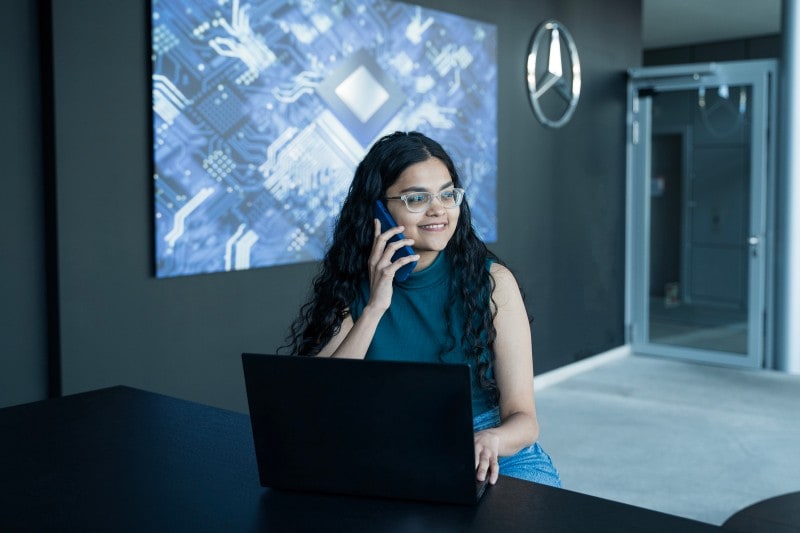You studied Industrial and Production Technology in Mysore (India). Where does your interest in technology come from?
As a child, I liked to go by train. My interest in the development of technology was born when my school class took a field trip to a railway museum, in which many old trains were exhibited. Additionally, creating value happens to be my main goal. This led to my interest in the automotive industry as well as in industrial and production engineering. I envisioned that I could have a visible and tangible influence here and that “my product” would directly reach customers. Mercedes-Benz then was a guest at my university and I learned more about the company, so I wanted to work there. Luckily, it came true.
Within your team in Bangalore, you are in charge of the integration of driver assistance components such as cameras and radars. What does your team look like? How do you work together?
Essentially, all components have to be in combination since they communicate with each other to provide the necessary functional output. If a single component fails, we fail together as a team. We therefore depend on each other, even if we don't directly work together. For instance, a colleague works on cameras, while I work on radar sensors. We have to interact a lot, since all components are attached to the bumper, but two sensors can't be too close to each other. While I position my radar sensor, another colleague may position their parking sensor: The camera has particular strengths in object classification, radar sensors are particularly good at detecting speed differences. There are still more driver assistance components on the same bumper. Together, we ensure that all requirements are met. We work together on every vehicle in an agile way. For instance, if I'm working on a vehicle model series at the project level, then I work closely together a team member who is working on a different sensor, but on the same vehicle model series. What I really enjoy is collaborating and being part of ideation marathons, on forward-looking ideas. Innovation is very much encouraged, which helps us to see beyond our own tasks. Working in a team that strives for peak performance helps me push my limits.
You received a full scholarship through the CSR initiative "Mercedes in Mech" from Mercedes-Benz Research and Development India (MBRDI) and started your first full-time job following a traineeship. How important was this support for you?
It provided me with a great start! It gave my career a push right when I was choosing my future professional field. During our second year, Mercedes-Benz introduced us to "Mercedes in Mech" on campus in order to encourage women to join the mechanical field. I then did an internship in the company and was suggested as one of six classmates for the two-year scholarship programme. From day one, I received good mentoring. That enabled me to better assimilate the corporate culture and processes of Mercedes-Benz. Following that, there was an opportunity for a full-time job. The opportunity presented itself at the right time and with the right people!
During your studies, you worked for the non-profit organisation "Make a Difference" to provide education to children in emergency shelters. How important was volunteering for you and how did it influence your personal development?
I started volunteering immediately during my first year at university. I was privileged enough to receive an education, but there are millions of children in India who do not have that opportunity. Of course, you can't change everything in a day, but you can personally contribute something that may create success later. During the first two years, I was a volunteer teaching assistant, which meant I taught English, Maths and Science to children between grades 5 and 10. We mostly helped the children with learning, but we also provided emotional and psychological support. In grade 10, we helped them with exams and career choices. Some of them got back in touch and let us know what they were doing now. I didn't make any monetary donations during my time at "Make a Difference" – I only contributed my time, my way of thinking and my knowledge, thereby contributing to the bigger picture. During those five years, I also built up my own skills. For instance, I trained other volunteers. The organisation is very large; it operates in 14 states and 23 cities in India. It was like being part of a real company. I gained leadership capabilities as well as presentation and project management skills. I learned how to manage volunteers, lead a project or a team and resolve conflicts. Indirectly, this was a huge help for my personal development.
Which personal goal would you still like to achieve?
My biggest personal goal is a combination of project management and a leadership role, in which I can be close to the topic, know what happens from beginning to end, and work together with my team on the implementation of an objective. That is what I would like to achieve in due course.
,xPosition=0,yPosition=0.5)


,xPosition=0.5,yPosition=0)